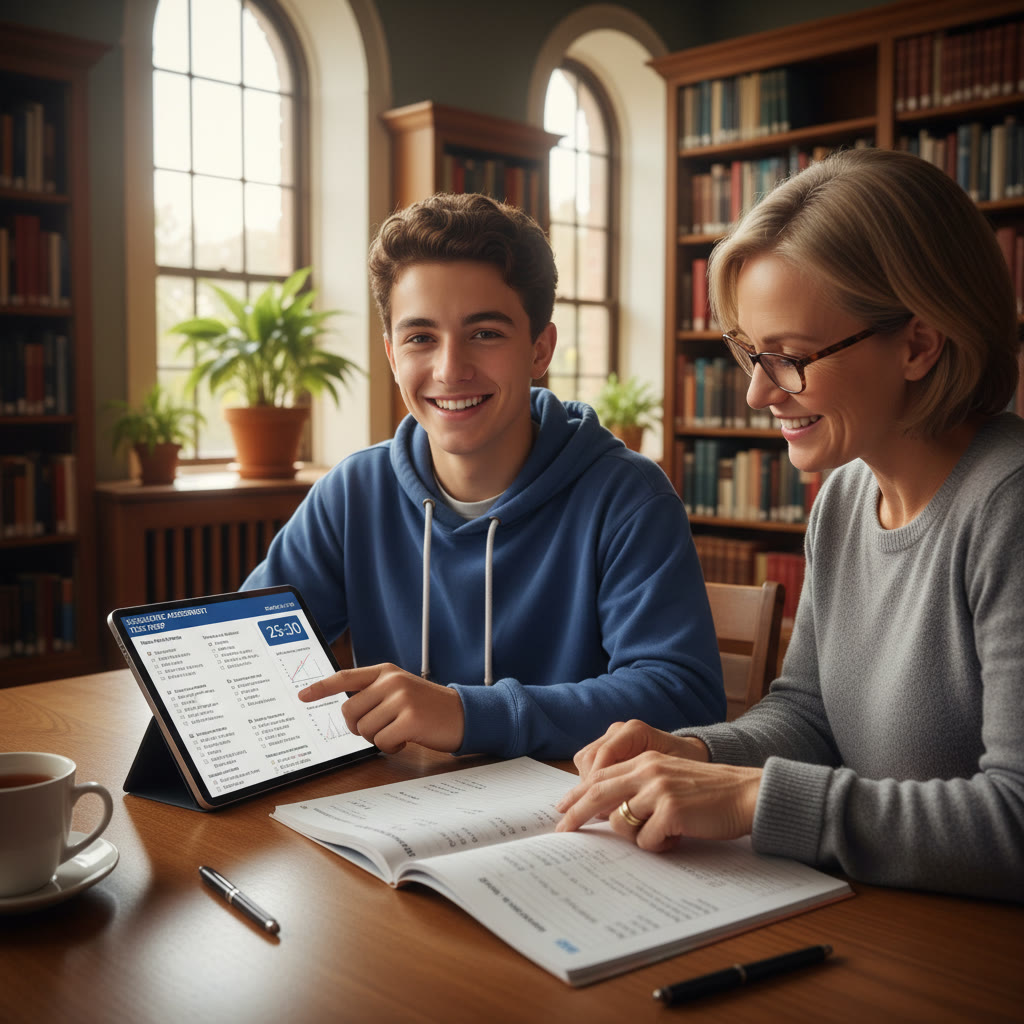Understanding USC’s SAT Landscape: What Students and Parents Need to Know
Applying to the University of Southern California feels like standing on the edge of something exciting — and a little nerve-wracking. USC is one of the most sought-after private research universities in the United States, known for its strong academic programs, vibrant campus life, and competitive admissions. If you or your student is wondering where the SAT fits into that picture today, this guide walks you through the facts, practical advice, and realistic strategies so test scores strengthen — rather than stress — your application.

Is USC test-optional, test-blind, or test-required?
USC’s testing policy has evolved over recent years, as have many selective colleges. At the time you’re reading this, USC considers SAT scores if submitted — which means applicants typically choose whether to include test results. That said, policies change; some applicants submit scores to strengthen competitive parts of their profile, while others focus on GPA, coursework, extracurriculars, and essays if they prefer not to submit test scores.
Practical takeaway: verify USC’s published testing policy on the university’s admissions page before you apply. If you plan to submit scores, treat them as a meaningful component of your application portfolio.
What SAT scores should you aim for to be competitive at USC?
Instead of a single magic number, think in ranges and context. USC is very selective — admitted students frequently show strong academic records and test scores.
- Competitive target range for total Digital SAT: aim toward the top quartile of admitted students. Many admitted students score in the mid-to-high 1400s to low 1500s on the 1600 scale.
- If your score is below the middle range for admitted students, other parts of your application (rigorous coursework, compelling essays, demonstrated leadership, strong recommendations) need to be especially strong.
- Remember: test scores are one piece of the holistic review. Leadership, talent, community impact, and fit with USC’s programs matter a great deal.
How USC uses submitted scores
USC and many institutions look holistically at each applicant. When you submit SAT scores, admissions officers may:
- Consider the scores alongside GPA and course rigor to assess academic preparedness.
- Use scores for scholarship consideration — strong SATs can unlock merit-based awards in some cases.
- Superscore: some colleges combine the highest Evidence-Based Reading & Writing and Math subscores across test dates to create a stronger composite. If you plan to submit multiple test dates, check USC’s current superscoring policy and whether the university superscores the Digital SAT.
Deciding whether to submit SAT scores to USC
Choosing to submit is personal and strategic. Here’s how to decide calmly and clearly:
- Submit if your score is within or above USC’s documented middle–upper range — it reinforces academic readiness.
- Consider withholding if your SAT is significantly below the admitted range and you cannot realistically improve it before application deadlines.
- Submit if you want to be considered for scholarships that explicitly use test scores.
- Use the optionality to your advantage: if other parts of your file tell a strong academic story (AP/IB coursework, high GPA, notable research or creative achievements), it can balance a decision not to submit.
Quick decision checklist
- Is your SAT score in the competitive range? If yes — submit.
- Are you applying for scholarships at USC that use SAT results? If yes — submit.
- Is your academic record otherwise outstanding and test scores are low? Consider not submitting but explain academic context in supplements (if relevant).
How the Digital SAT affects strategy
The transition to the Digital SAT introduced a shorter, adaptive format with slightly different timing and question distribution. A few practical effects:
- Adaptive testing: sections adjust to your performance. Early sections influence the difficulty of later questions — consistent pacing matters.
- Section-level focus: because of the adaptive nature, improving accuracy on every question is important; careless mistakes disproportionately hurt you.
- Familiarity with digital tools: practice in the exact testing environment is crucial — use official digital practice to simulate the test interface and timing.
Study-smart tips for the Digital SAT
- Take full, timed digital practice tests — not just question sets. That conditions you for stamina and the adaptive pattern.
- Analyze wrong answers for patterns (e.g., algebra errors, vocabulary in context, data interpretation). Targeted work beats unfocused hours.
- Work on time management: learn how much time you can safely spend on each question and when to move on.
- Use tools like official digital practice and, where useful, personalized tutoring to correct skill gaps.

Practical study timeline: 6 months to test day
This sample timeline is flexible — some students need more time, some less — but it’s a reliable framework you can adapt.
| Month | Focus | Key Actions |
|---|---|---|
| Month 1–2 | Diagnostic & Foundations | Take a full digital practice test; identify weaknesses; build a study plan; start content review (algebra, grammar, reading strategies). |
| Month 3–4 | Targeted Practice | Deep practice on weak areas; daily problem sets; weekly timed section practice; begin strategy refresh (skipping, guessing, time allocation). |
| Month 5 | Full Tests & Analysis | Take full-length practice tests every 7-10 days; detailed error logs; simulate test day conditions including device and breaks. |
| Last 2 weeks | Polish & Rest | Light review, focused practice on common error types, finalize test logistics, prioritize sleep and healthy routine. |
How personalized tutoring can accelerate improvement
One-on-one guidance is especially valuable when time is limited or when students have specific weaknesses. Personalized tutors craft tailored study plans, track progress, and provide targeted strategies to overcome recurring mistakes. Tools like Sparkl’s personalized tutoring offer benefits that naturally fit many students’ needs: 1-on-1 guidance, tailored plans that adapt to performance, expert tutors who interpret error patterns, and AI-driven insights to find the fastest path to score gains. When used well (and sparingly alongside disciplined practice), tutoring becomes a force multiplier, not a crutch.
Application strategy: where SATs intersect with essays, activities, and recommendations
Think of your application like a mosaic. SAT scores are one tile. Your essays, activities, recommendations, and coursework form the rest. Here are ways to make the entire picture compelling:
- Essays: Use them to reveal character, resilience, intellectual curiosity, and fit with USC’s programs. Essays can contextualize why a test score may not reflect your potential.
- Activities: Highlight sustained commitment and leadership; quality often beats quantity.
- Recommendations: Ask recommenders who know your academic habits and character; specific anecdotes paint the most vivid picture.
- Portfolio/Arts/Engineering Work: If you’re applying to majors that accept portfolios or audition materials, make those as strong as your academic evidence.
When a lower SAT score isn’t the end of the story
If your SAT falls short of USC’s median range, don’t panic. Consider these constructive moves:
- Retake the Digital SAT if you can reasonably improve — targeted practice often yields gains.
- Strengthen other application components: additional coursework, significant project work, leadership roles, or compelling research/creative output.
- Use application supplements to show context (for example, extenuating circumstances, changes in schooling, or late academic improvement).
- Speak with a trusted counselor or a qualified tutor to craft a plan: many students see real benefits from short, focused tutoring blocks that target their exact weaknesses.
How scholarships and financial aid tie to SAT reporting
Some merit scholarships consider standardized test scores as part of evaluation. If scholarship eligibility is a priority, submitting your SAT may influence offers. However, financial aid and need-based support rely more on FAFSA/CSS Profile and financial information rather than SAT scores.
Quick tip
If you’re counting on merit-based scholarships, research USC scholarship criteria carefully and confirm whether test scores are used in awarding decisions. If they are, and if your score is strong, submitting it could be beneficial.
Test day logistics for the Digital SAT
Good logistics reduce stress and improve performance. On test day:
- Bring accepted identification and any required materials. Confirm allowed calculators and device rules (if you’re using an approved school-provided device for digital administration).
- Arrive rested and early. A calm start beats last-minute panic.
- Use built-in tools: the digital interface includes highlighting and other features — make sure you’ve practiced with them.
- Pacing tip: if a question is taking more than a minute beyond the expected per-question time, flag it and move on. Return if you have time.
After scores arrive: what to do next
When scores are released, take these steps:
- Compare your scores to USC’s admitted range and to the goals you set during preparation.
- If you’re happy with the score, send it. If not, decide whether to retake the Digital SAT (weighing time and application deadlines).
- If submitting, consider superscoring (if applicable): send only your best composite if USC uses superscoring.
Common myths and realities about SATs and USC admissions
Clearing up misunderstandings saves time and worry.
- Myth: “You must have a perfect SAT to get into USC.” Reality: Perfect scores help but are not required. USC values a balanced application.
- Myth: “If I don’t submit scores, I won’t be considered.” Reality: USC reviews applicants holistically; not submitting is a reasonable option for many.
- Myth: “Only standardized tests matter for scholarships.” Reality: Many scholarships weigh academic records, leadership, and financial need alongside test results.
Parent playbook: supporting without taking over
Parents are essential allies. Here’s how to help thoughtfully:
- Encourage routine: steady schedules for practice beats last-minute cramming.
- Be a logistics manager: register for tests, confirm deadlines, and ensure the student has the right ID and testing materials.
- Balance encouragement with autonomy: let your student lead study choices while you provide resources and emotional support.
- Consider targeted professional help: short sessions with an expert tutor can build confidence and fill specific gaps — look for services that offer tailored plans and measurable progress, like Sparkl’s personalized tutoring options.
When to consider professional tutoring
Tutoring is a smart investment when:
- Your student needs a clear, efficient plan and someone to hold them accountable.
- There are stubborn content gaps (for instance, algebra or reading comprehension) that slowed progress despite solo practice.
- Time is limited and you want a focused plan that targets the highest-return activities.
Sample case studies: real-world context
These brief examples show how diverse paths can lead to successful USC applications.
Case 1: The upward climber
Maya improved from a 1320 to a 1480 after six months of targeted practice focused on algebra fundamentals and timing strategies. She paired practice tests with weekly 1-on-1 sessions to correct persistent errors. Her improved score, strong upward grade trend, and a portfolio of community health project work strengthened her application.
Case 2: The non-submitter with strong academics
Jason chose not to submit SAT scores. He had a near-perfect class rank, several research experiences, and glowing teacher recommendations. His essays highlighted unique leadership in robotics. USC admitted him based on the holistic file.
Case 3: Strategic submitter for scholarship
Selena’s score (1520) was on the high end of USC’s admitted range. She submitted it and was considered for a merit scholarship. Her application also included strong arts portfolio pieces relevant to her major in cinematic arts.
Final checklist before you press submit
- Confirm USC’s current test policy and scholarship criteria.
- If submitting scores, verify you sent the correct test date and that superscoring rules are understood.
- Complete a final read-through of essays and application supplements; ask a teacher or counselor for a second opinion.
- Prepare an application narrative: what are the three themes your application communicates? Make sure each piece reinforces them.
Parting thoughts: perspective and persistence
USC is competitive, but admissions decisions reflect more than a number. The SAT can be an asset when used strategically, but it’s rarely the only path to admission. A thoughtful plan, realistic study timeline, and targeted help when needed will maximize your chances — and protect your peace of mind.
If your student would benefit from tailored guidance, consider short, focused tutoring blocks that provide one-on-one strategy, adaptive study plans, and clear progress metrics. Personalized approaches help students improve efficiently and with confidence.
Want one next step?
Start with a diagnostic Digital SAT practice test and a realistic score goal based on USC’s admitted ranges. From there, build a study plan that balances content, strategy, and well-being. The college application process is a marathon — pace yourself, celebrate small wins, and remember that growth during the process matters as much as the final result.
Good luck — and may your preparation be steady, focused, and full of learning.

















No Comments
Leave a comment Cancel